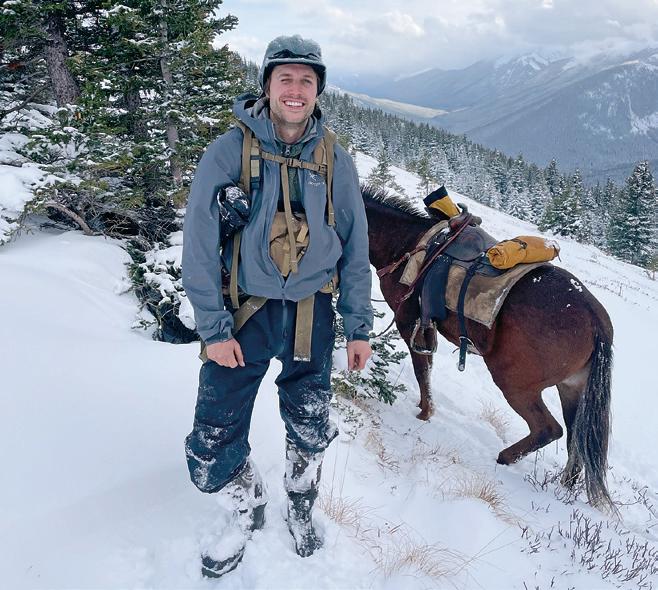
24 minute read
2022 Grad Student Spotlight
Leading the way in wildlife research & management
by Laura Balyx and Sydney Goward
efore most of today’s wildlife biologists, landscape managers, and policy makers obtained their positions, they probably went to graduate school. Grad school is an opportunity to focus on research after obtaining an undergraduate degree (for example, a Bachelor of Science or BSc) under the supervision of a professor at a university. The most common graduate degrees in the wildlife field are a Master of Science (MSc), which takes 2+ years to complete and usually consists of two scientific studies written in a thesis, and Doctor of Philosophy (PhD), which takes 4+ years to complete and consists of three scientific studies in a thesis. Throughout their research, students gain the skills necessary for a career in wildlife management including statistical analyses, project management, and stakeholder engagement (to name a few). The results from grad student research are also used by governments, First Nations, and other organisations to influence on-the-ground wildlife management and policy decisions. It takes an incredibly dedicated and determined individual to see these projects to fruition – which is why we wanted to highlight some of the incredible student projects from this year. We asked current and recent grads to submit their projects to us so that we could share some of their important work that will influence the future of wildlife management!
Laura Balyx is a recent Master of Science graduate from the University of British Columbia Okanagan. She now works with multiple organizations on a variety of wildlife research projects, including habitat selection analysis of mountain goats, bighorn sheep and white-tail deer, and is involved in research on chronic wasting disease. Laura is excited to continue to collaborate with numerous agencies and build her career in wildlife management and policy. When Laura is not thinking about wildlife, she enjoys exploring the outdoors with her dog, cooking, and instructing spin classes! Sydney is a wildlife researcher and forestry professional (non-practicing), specializing in working with and for Indigenous research & management partners. She is currently a Master of Science student at the University of Victoria, where she is partnered with Gwich’in organizations, studying Dall’s sheep and mammal community ecology in the Northern Richardson Mountains, NWT. Concurrent to her MSc, she is also collaborating on the development of BC’s Thinhorn Sheep Stewardship Framework, as part of the Indigenous perspectives working group. Born and raised in the Interior of BC, she is an active hunter, fly fisher, forager, wildlife photographer, and overall backcountry enthusiast.
by Peter White – MSc (2022), University of British Columbia, Okanagan Campus Email: peter.white@ubc.ca
In 2017, Parks Canada reintroduced a wild herd of plains bison to Banff National Park. Returning this species to the landscape was expected to have wide-ranging impacts on vegetation and other species. Given concerns for competition between bison and another iconic species, the Rocky Mountain bighorn sheep, managers were interested in assessing potential impacts. Using GPS collar data provided by Parks Canada, I investigated how the newly reintroduced bison impacted sheep by measuring habitat and spatial use. Where the two species overlapped on the landscape, I then determined if the presence of bison was changing the way sheep foraged. At this stage in the reintroduction, bison and sheep showed minimal levels of overlap on the landscape. During winter when food resources are typically lower, sheep did not avoid shared ranges with bison. Bison, however, were found to use isolated pockets of high-quality sheep habitats and managers should continue to evaluate interactions between species as bison populations grow. Upon completing his graduate work at the University of British Columbia Okanagan, Peter recently moved back to his home in Alberta’s Rocky Mountains. When he is not helping manage Banff’s new bison herd, he likes to spend time hunting, fishing and re-discovering old trails on the saddle.
by Nesa7 White – MSc Student, Thompson Rivers University Email: whiten10@mytru.ca
Bighorn sheep populations in the Thompson River region of BC Canada have declined by 50 % over the past 10 years. The primary cause of the decline is unknown, but low rates of lamb survival are highly suspected to be the main driver. To further investigate this theory, twenty ewes from the Kamloops Lake herd were fitted with GPS/VHF collars in December of 2021 by the Ministry of Forests Lands and Resources Operations and the Wild Sheep Society of BC. Their movements have revealed that the herd consists of ‘two sub herds,’ each of which occupies its own distinct home range. My proposed study will estimate the rates of recruitment in each sub herd as well as assess the health of the grassland ecosystems in each sub herd’s home range. The results of the grassland health assessments will allow me to identify elements in the grasslands that may be limiting— directly or indirectly—lambs from reaching the recruitment stage. The second component of my study involves extensively documenting Secwépemc Traditional Ecological Knowledge (TEK) regarding the ecology and history of the Kamloops Lake herd and their habitat. Secwépemc TEK coupled with knowledge of the current ecological conditions within the habitat will strengthen our understanding of the Kamloops Lake herd’s history and ecology. Our monitoring of lamb recruitment will provide information about how lamb survival is affecting the trajectory of the population. The results of the study will be used to develop management strategies to restore the herd and their habitat. Nesa7 (pronounced Neesha) is from Nlha7kap’mx from Lytton First Nation in Lytton, BC but has lived in Kamloops on and off for the past 12 years. After graduating from the Bachelor of Natural Resource Science program at TRU, she carried on to a Masters there. Her interests are wildlife and the environment/nature. In her free time, you can find her anywhere outdoors in nature. She is a mother of two sons (who she adores), making a lot of time for their interests as well. Nesa7 is completely immersed in bighorns and plans to eventually pursue a career in teaching.
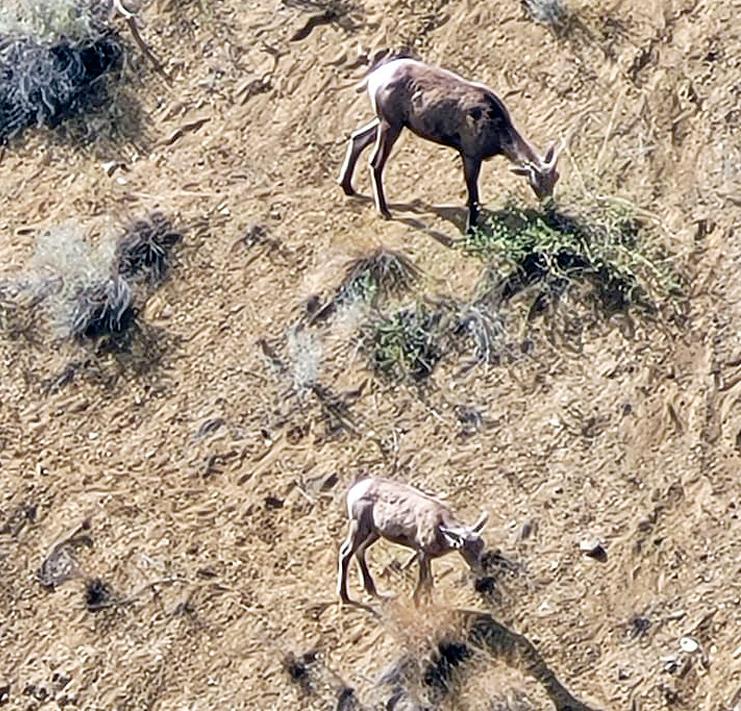
by Mary Anne Schoenhardt – MES Student, Queen’s University Email: maryanne.schoenhardt@queensu.ca
Climate change is causing rapid changes to occur in the high altitude, high latitude environments used by Dall’s sheep. As an iconic image of Kluane National Park and Reserve in southwest Yukon, they are a species with cultural, economic, and ecological significance. Dall’s sheep have been suggested as indicators of overall ecosystem health; studying their populations is important for not just understanding sheep population health, but also understanding changes to environmental conditions. Since 1977, staff at Kluane National Park and Reserve have performed aerial surveys of Dall’s sheep, recording counts and location of observed individuals. There are almost 4000 observations from 40 individual years of surveys in this significant, long-term dataset. In partnership with Parks Canada, I am using these data to address three objectives: first, to better understand where Dall’s sheep are using habitat; second, to understand whether these locations have changed over time; and third, to understand the characteristics of this habitat. To understand locations of Dall’s sheep habitat use, I am mapping the distribution of sheep observations. Comparing changes to these distributions over time will then provide an understanding of whether their habitat use has changed. Following this, I am investigating the topographic and vegetative characteristics of regions identified as frequently used by sheep to better characterise their preferred habitat and help to better interpret patterns observed in their spatial distribution. An understanding of the distribution of sheep within Kluane National Park and Reserve is important for better understanding this rapidly changing environment and prioritising conservation actions taken within it. Mary Anne is a master’s student in environmental studies (MES) at Queen’s University. She is interested in landscape ecology and GIS applications in conservation biology. Outside of academics, Mary Anne loves spending time outdoors and exploring the environment around her, whether that be by foot, canoe, bike, or skis!
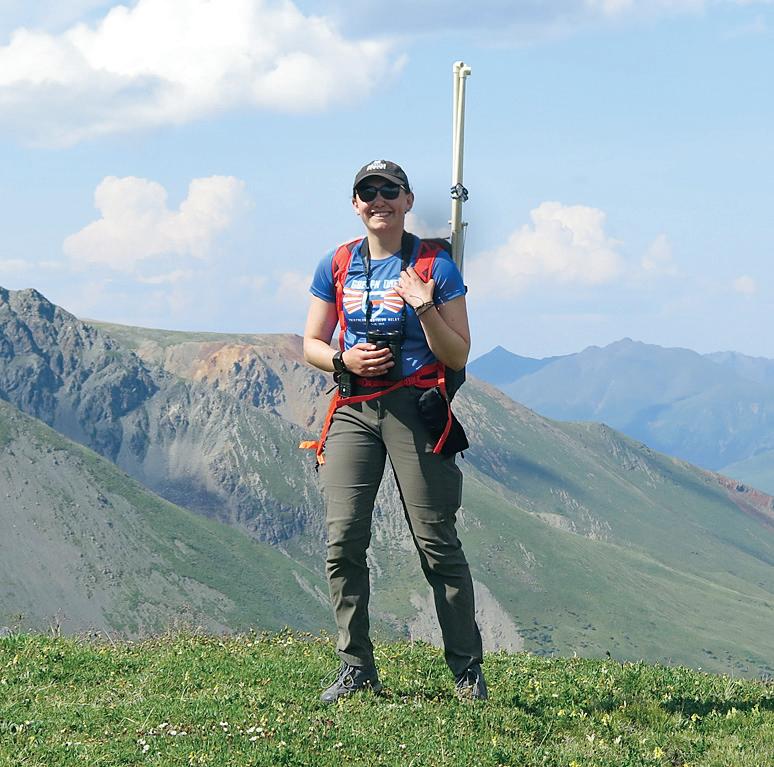
by Edyta Marcisz – MSc (2021), Thompson Rivers University Email: edyta.marcisz@gmail.com
The movements of animals provide insight into their spatial distribution, landscape use, gene flow, and potential for disease transmission, and thus are an important measure in the study of the species’ ecology and the development of conservation plans and management practices. This study provides an analysis of movements of Bighorn Sheep in the Thompson Region of British Columbia relative to proximity of domestic sheep. I used GPS location data of 40 rams from four different herds monitored during 2015-2018 to evaluate home range and core areas of each ram group (band) while providing the comparison of four home range estimation methods. Each of the ram bands exhibited nonmigratory behaviour. Their seasonal ranges were considerably larger during the relatively short rutting season. These observations match those reported in previous studies with reintroduced Bighorn Sheep. This study also confirms connectivity between these herds and an area occupied by other nearby herds. Studied rams displayed short foray movement of less than 6 km, which contrasts with that reported elsewhere, and suggest a lower level of risk of contact with domestic animals existing outside of the herd home ranges. However, the likelihood of a transmission event cannot be completely discounted. A significant amount of private land overlaps or lays adjacent to the home ranges of the study herds, indicating that expanded future use of these lands for livestock range and/or an increase in Bighorn Sheep populations will increase the likelihood of contact with domestic animals. Overall, my findings are relevant for establishing operational rules for land use practices and activities seeking to reduce impacts on bighorn herds. Our partners on this project included Chilcotin Holidays and FLNRORD. Edyta is originally from Poland, but the Canadian vastness, nature, and wildlife keeps her in Canada. Currently she is with the Adams Lake Indian Band, based in Chase, BC, where she works on cumulative effects between all land uses, natural disturbance, and climate change.

by Gord Emery – BSc (2022), University of Northern British Columbia Email: gord@chuchoenvironmental.com ● Instagram: @gordonemery
Access to trace minerals is essential to the physiological functions of ruminant species. Deficiency in essential trace minerals can cause many adverse effects ranging from limited growth to impaired bodily functions that can lead to death. Ungulates across North America commonly practice geophagia at areas referred to as “licks” to obtain minerals lacking in their diet. We used GPS collar data from 19 Stone’s sheep in the Cassiar Mountains of Northern British Columbia, Canada, to identify mineral licks and evaluate the mineral composition in the soils. Our objectives were to 1) identify the factors that influenced the use of mineral licks by Stone’s sheep, 2) identify the seasonal patterns of mineral lick use, and 3) provide an overview of mineral lick characteristics. We successfully identified five mineral lick sites that collared sheep used. We then used fractional regression to test several model hypotheses that were predicted to influence visitation by Stone’s sheep to mineral licks. We found that visitation was best described by models that included nursing status, concentration of magnesium and sodium in the soils, and the elevation of the mineral lick location. These findings supported our model predictions that post parturient ewes would use mineral licks at a higher rate than ewes without lambs. Gord Emery is a Wildlife Biologist at Chu Cho Environmental working for the Tsay Keh Dene Nation. He grew up in the surrounding area of 100 Mile House, BC. Gord’s family valued wild harvests for sustenance, and naturally, he developed a passion for wildlife and hunting. He also enjoys backcountry snowboarding, fishing, multi-day backpacking trips, and anything that gets him outdoors and in the mountains.
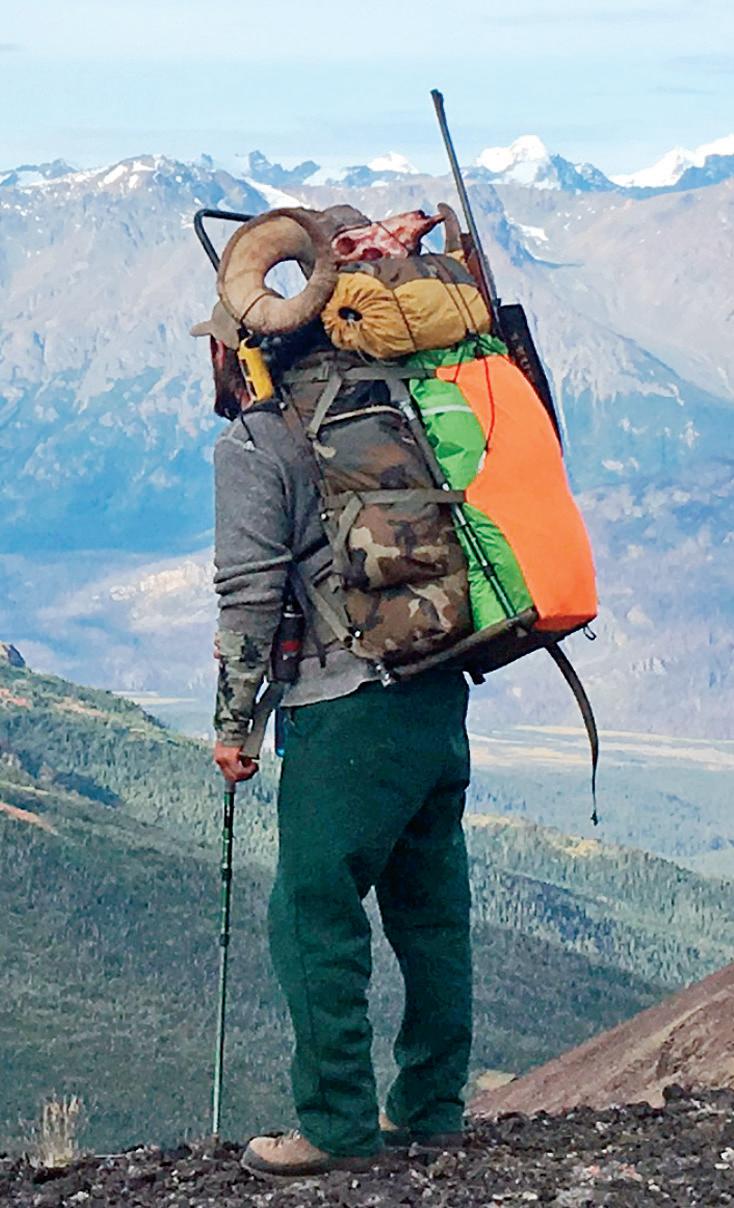
by Maddy Wrazej – MSc Student, University of British Columbia, Vancouver Campus Email: mcwrazej@mail.ubc.ca ● Twitter: @MadeleineWrazej
Mountain goats have been found to be sensitive to human disturbance, but the effects of non-motorized recreational activities on mountain goats are still not well understood. Mountain goats are an iconic alpine species found throughout the mountainous regions of western North America, including Banff and Yoho National Parks. These parks have extensive trail networks sought out by over a million keen outdoor recreationists annually. Some of these trails pass through important goat habitat. Increased human activity in these areas may trigger changes in goat behaviour, such as displacement from suitable habitat and altered daily activity patterns. It may also cause increased stress that can negatively impact goat health and reproductive success. My research investigates the impacts of recreation on mountain goats in Banff and Yoho National Parks using wildlife camera traps and fecal stress hormone analysis. Camera traps have been deployed both on and off-trail across sites with varying levels of recreation pressure. I will use camera traps to assess if goats are avoiding humans in space or time as a strategy to minimise overlap with humans. Fecal pellets will be collected to measure if goats exposed to high levels of recreation will have elevated stress levels compared to those in an area with minimal human disturbance. With the support of academic and government partners, I aim to improve our understanding of the impacts of recreation on mountain goats within the parks. The analysis and baseline data from my study can help inform future decisions on management and protection of mountain goat habitat both inside and outside of parks. Maddy grew up in a small town in BC, right on the BC-Alberta border. She graduated from the University of Victoria with a Bachelor of Science in 2019. Since 2017, Maddy has worked in Resource Conservation for Parks Canada both as a student and as a fulltime employee. Working and recreating in the National Parks her whole life is what inspired Maddy to pursue her thesis research. When she’s not at her computer or in the field, she is usually out trail running, skiing, climbing or doing some other mountain sport.
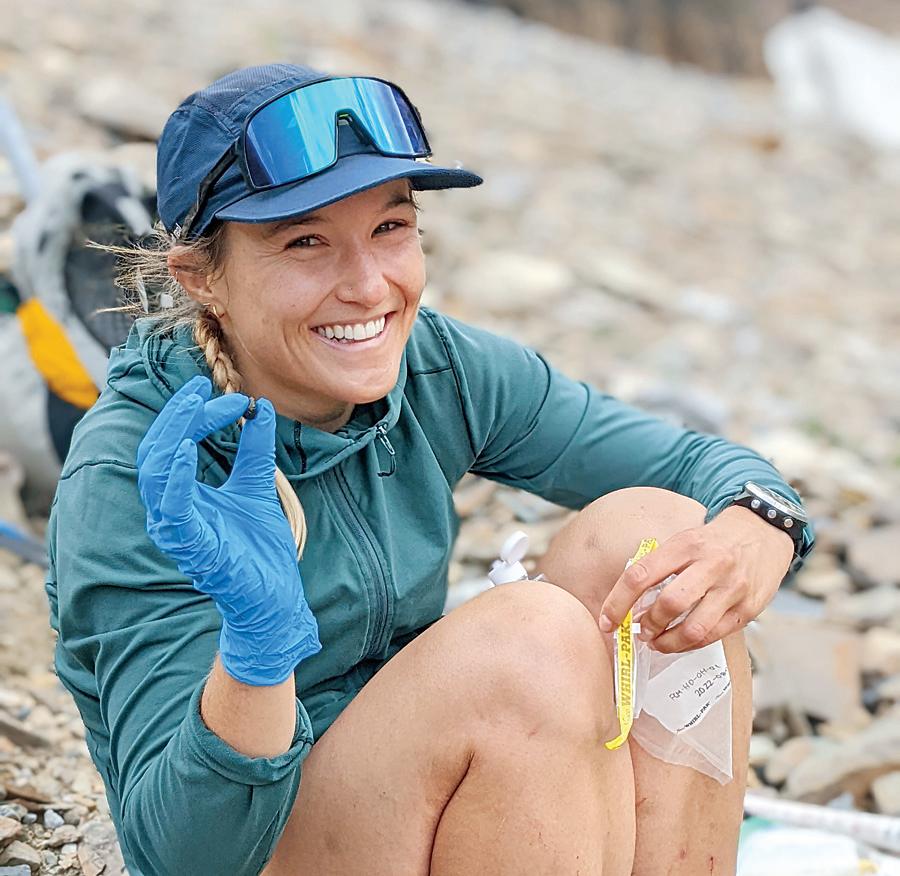
by Lilli Gaston – BSc in Biology (2022), University of Victoria Email: millicentgaston@gmail.com ● Instagram: @lilligaston
Across landscapes, fishers respond differently to different types of human disturbance caused by oil and gas exploration, the forestry industry, and other types of development. In my undergrad research, we found that fishers respond negatively to active disturbance features (otherwise known as the “footfall” of disturbance) and positively to inactive disturbance features, the scars of resource extraction (or “footprint”). We also found that fishers occur in multiple habitat types available on the landscape, not just the old-growth, complex forests they are known to prefer. These findings highlight the need to look across diverse landscapes and include multiple predictors of occurrence when making insights about where species occur and why. Landscape-altering resource extraction is impacting many species, including fishers, and, in order to learn how to share the landscape with humans, wildlife, and industry, conservation management should be approached at the landscape-level, otherwise we will miss the whole picture. Many thanks to my co-authors Rebecca M. Smith, Andrew Ladle, Frances E.C. Stewart, and Jason T. Fisher. Lilli grew up on beautiful Vancouver Island and recently graduated with a BSc in Biology from the University of Victoria. She is now working at the university’s Applied Conservation Macroecology Lab, and is interested in pursuing an MSc in the coming years. She loves birdwatching, hiking and sea kayaking, reading fiction, hanging out with her niece, and enjoying good food with friends and family!
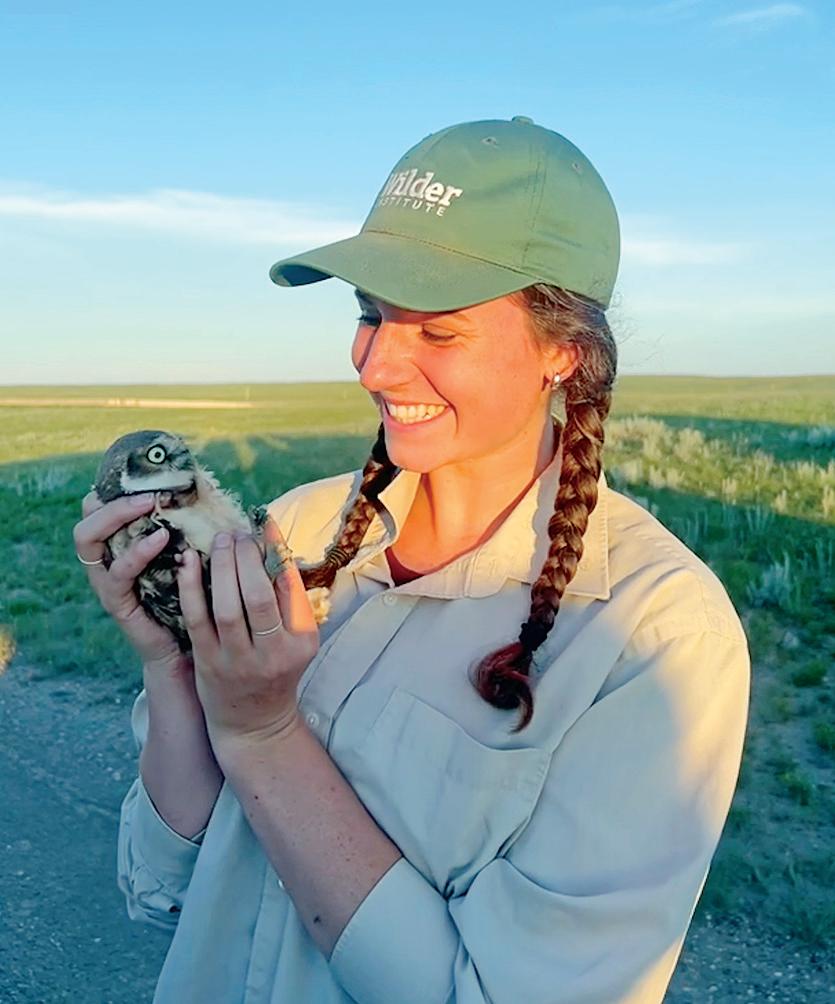
by Spencer Greening – PhD Student, Simon Fraser University Instagram: lagoot.sg
This research explores Indigenous resource and wildlife management by narrating Gitga’at relationships with mountain goats. It is built on a cornerstone philosophy in Indigenous natural sciences; that is, the interconnectedness of all things is the basis for human engagement with the natural world. In particular, my research explores the idea that human beings can cultivate reciprocal relationships with their local environments that have the potential to nurture and sustain thriving ecosystems. As a Tsimshian member of the Gitga’at First Nation, I engage with these ideas through centring the knowledge systems, stewardship practices, laws, histories, and spiritual beliefs of my ancestors to highlight how Indigenous knowledges surrounding harvests can lead to both the human and non-human world thriving. I use our oral histories, traditional ecological knowledge, and Gitga’at rituals and laws to collaborate and contrast current Western methods of managing ecosystems. I pair this narrative with my personal experience of harvesting mountain goats in a culturally appropriate way, while working on goat monitoring projects in Gitga’at territory. This discussion is also complimented by personal reflections of my time spent in politics and government to government relations navigating the creation and negotiation of Indigenous conservancies, Indigenous management plans, provincial harvesting regulations, and industrial development. Spencer Greening (La’goot) is from the Tsimshian community of the Gitga’at First Nation (Hartley Bay). Spencer is currently a PhD student in the Faculty of Environment at Simon Fraser University. When not doing research, Spencer is actively engaged with cultural roles and work within the community of Hartley Bay and the greater Tsimshian Nation and strives to be on the lands and waters harvesting as much as possible.
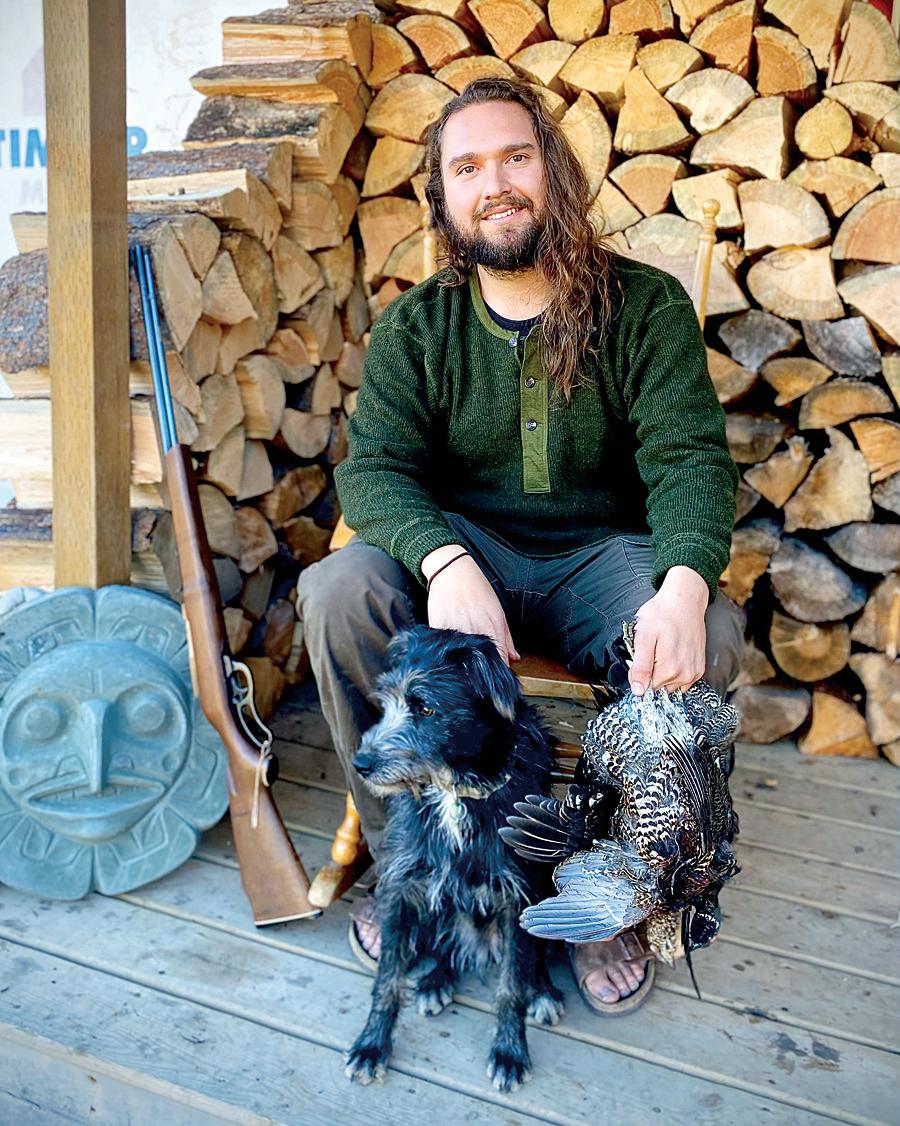
by Marie-Pier Poulin – MSc (2022), University of Wyoming Email: mpoulin1@uwyo.edu
Road networks represent one of the most ubiquitous human-caused disturbances affecting animal populations. While major roads can act as barriers to movement, many animals have seasonal ranges bisected by roads and thus need to cross them regularly to access food. Although crossing roads is risky business for wildlife, how animals balance risks and rewards, and how sociality plays a role in their responses to these disturbances remains unclear. In collaboration with Parks Canada, I investigated risk-taking behaviour by elk in Yoho National Park with respect to a major highway, the Trans-Canada highway (TCH), which bisects their winter range. Elk in Yoho cross the highway often – some individuals cross it nearly 70 times per month! Using field observations and GPS collars on > 75% of the adults in the population, we found that elk in Yoho generally avoided crossing the highway, especially at high traffic volumes. However, we found that when crossing, elk balanced risks and rewards: they chose to move to areas with greater food biomass when crossing the highway. We also showed that social characteristics of groups of elk influenced their probability of crossing the TCH. Specifically, elk in groups that were more socially connected and more familiar were more likely to cross at safer times when traffic volume was low. Our work demonstrates how decisionmaking processes, considering the risks of crossing and food rewards, allow animals to successfully and profitably navigate this busy highway. Our work also reveals a strong influence of group dynamics on crossing behaviours, and that sociality helps mitigate the risks of crossing. All the steps leading to those results will help guide management, as plans are underway to widen this section of the TCH. Marie-Pier is from Québec but moved out west to conduct her Master of Science research on elk in Yoho National Park in BC, in collaboration with Parks Canada and the Merkle Research Group at the University of Wyoming. She enjoys spending time outdoors, mountain biking and skiing powder on sunny winter days!
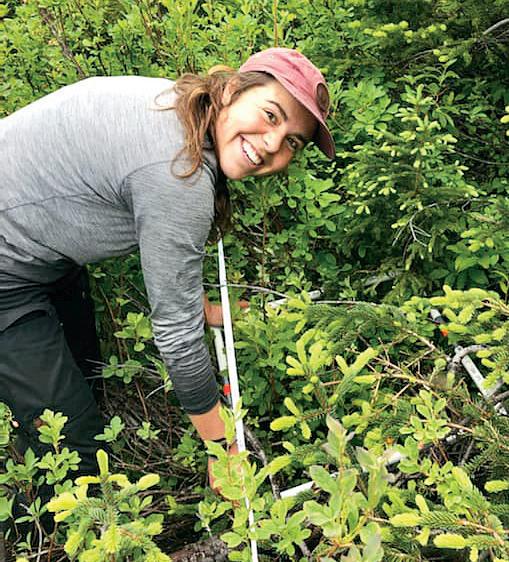
by Chad Rice – MSc (2022), Sherbrooke University Email: chad.rice@usherbrooke.ca
Wildlife management attempts to balance consumptive and nonconsumptive values to manage hunting opportunities, considering population resilience. Mountain goats Oreamnos americanus are particularly sensitive to harvest. Using data from 33 792 mountain goats harvested in British Columbia (BC), Canada, between 1977 and 2019, we performed Bayesian regressions to examine the effect of regulations (limited entry hunting (LEH) or general open season (GOS)) on yearly harvest and harvest sex ratios. We also investigated temporal trends and the effect of licensed hunter residency (resident in British Columbia, or not) on harvest sex ratios. We then examined how horn length of harvested mountain goats was influenced by sex, year of harvest, age and mountain range. The more restrictive LEH regulations generally reduced the harvest of mountain goats. The annual proportion of males harvested appeared independent of regulation and increased over time. Non-resident hunters harvested a greater proportion of males compared to resident hunters. The combined length of the first and second horn growth increments decreased slightly with age at harvest for males but increased for females, suggesting a possible very weak hunter selection for males with rapid early horn growth and possibly against lactating females. Overall, we found that restrictive LEH regulation in British Columbia did reduce the harvest. We also found that hunters would choose males with faster growing horns. However, this would not apply to females. Our study supports LEH regulations and hunter education to distinguish sex and age as key tools for mountain goat harvest management. Similar tools could be considered to manage other ungulates that are sensitive to harvest. You can read the full publication here: Regulations and hunter preference affect mountain goat harvest and horn length. https://doi. org/10.1002/wlb3.01056 Chad published not only one, but two articles from his MSc! If you’re interested in the other (where they found a decrease over time in the age at primiparity of harvested British Columbia coastal mountain goats but an increase for interior mountain goats), check it out here: Variation in age of primiparity in mountain goats (Oreamnos americanus) estimated from horn growth increments. https://doi.org/10.1139/cjz-2021-0166 Chad is a newly graduated Master’s student in biology from Sherbrooke University. He presently lives in SeptÎles, Quebec and like most Quebeckers his mother tongue is French. If you check out his publications (links below) you’ll notice he has both French and English abstracts! Outside his work with Mountain goats, Chad likes watching anime and TV shows and reading manga, but also enjoys hiking, hunting and biking.
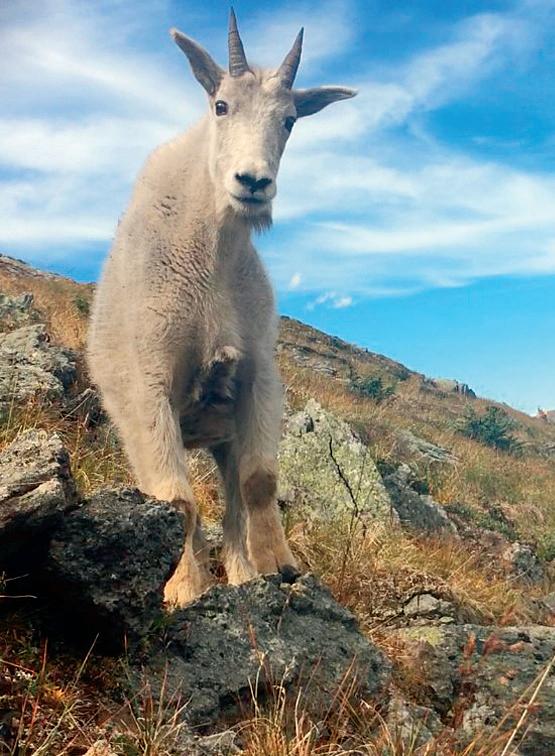
by Katie Tjaden-McClement – MSc Student, University of British Columbia, Vancouver Campus Email: katietm@mail.ubc.ca ● Twitter: @KatieTjaden
Caribou in the Chilcotin Plateau of west-central BC have sharply declined, and we don’t fully know why. Widespread logging and forest fire, increased moose and deer populations, and correspondingly increased predator populations are a primary suspect. There are also free-ranging horses in the area that could be supporting predator populations and competing with moose, a highly valued cultural and game species. My research is using wildlife cameras to determine the cause of caribou decline and whether horses are outcompeting moose. This project is in partnership with the BC Government, Tsilhqotʼin National Government, Ulkatcho First Nation, and Southern Dakelh Nation Alliance. Katie is a Master of Science student at the University of British Columbia (UBC) Vancouver in the Wildlife Coexistence (WildCo) Lab. She grew up in rural Manitoba and moved to Vancouver to do her undergraduate studies in Biology at UBC. Outside of research, Katie enjoys hiking, birding, cooking and baking, and crochet!
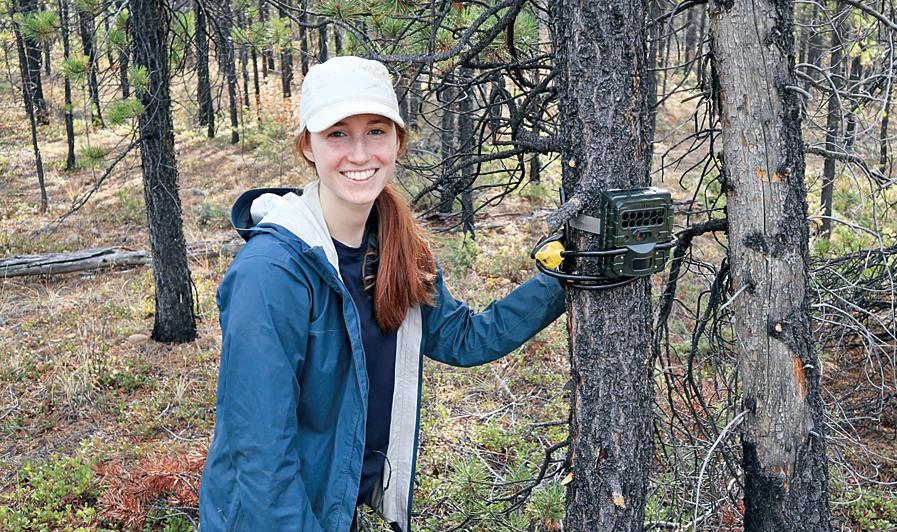
by Kevin White – PhD Candidate, University of Victoria Email: kevinwhite0714@gmail.com
Snow avalanches represent a widespread and seasonally dynamic landscape altering force in mountain environments. Mountain adapted species may benefit from avalanche disturbance via utilization of resultant forage rich, early successional stage habitats that are characterized by relatively low winter snow depths and earlier spring greenup. However, the costs associated with using such risky landscape features can be substantial and likely have important implications for mountain goat population dynamics. For example, the conservative life history strategy and resultant low intrinsic population growth rates of mountain specialists, such as mountain goats, suggests that major population declines may occur during moderate-severe avalanche seasons. I look forward to conducting research and analyses in coastal Alaska (and potentially BC) focused on the understanding relationships between mountain goats and avalanche processes; an important population driver that may have both costs and benefits especially when viewed through the lens of climate change. A culturally important and iconic species of western North American landscapes, mountain goats are considered sentinels of health and resilience of mountain ecosystems and present important challenges and opportunities for conservation. Kevin is a PhD candidate at the University of Victoria (with a BSc from Humboldt State Univ, and an MSc from University of Nevada Reno), and is in affiliation with the University of Alaska Southeast. Kevin worked as Research Biologist with the Alaska Department of Fish & Game during 1999-2022, and currently serves on the Executive Committee of the Northern Wild Sheep & Goat Council[KW1] and as the Science and Conservation Committee co-chair for the Rocky Mountain Goat Alliance. He is broadly interested in the ecology and conservation of mountain ecosystems with a specific interest in mountain goat population ecology in relation to weather, climate and environmental conditions. When he gets a break in the action, he enjoys hiking, backcountry skiing, cabin carpentry projects, salmon fishing and deer (and, when possible, caribou) hunting. For a list of Kevin’s publications on previous and related work, check out his profile on ResearchGate: https://www. researchgate.net/profile/Kevin-White-13
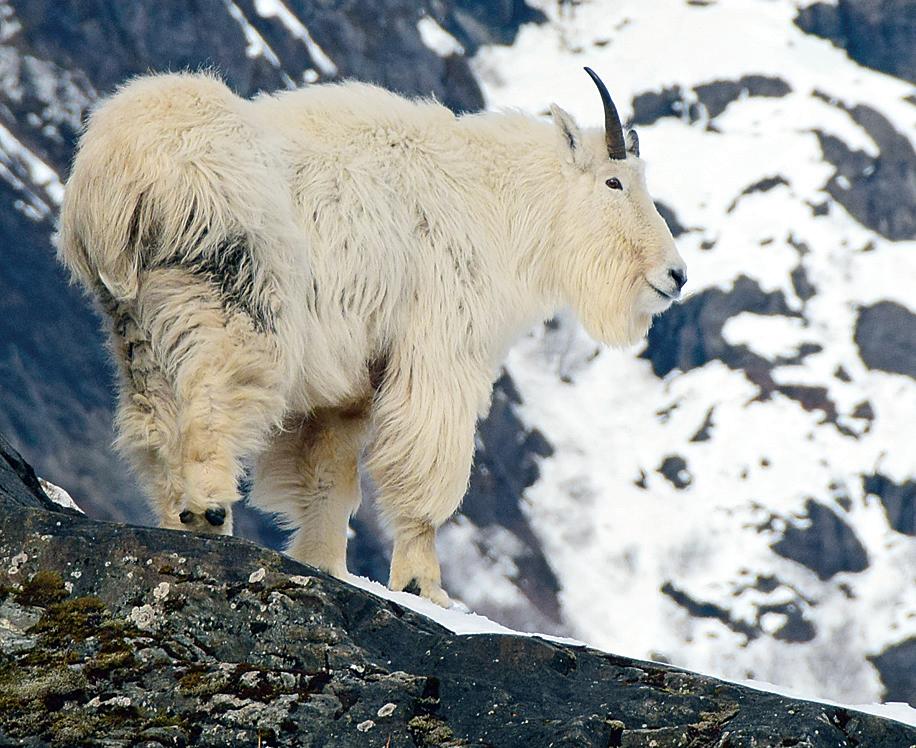
by Jeffrey Nishima-Miller – PhD Student, University of British Columbia, Okanagan Campus Email: jeffrey.nishima-miller@ubc.ca
The 2014 Supreme Court of Canada’s landmark Tsilhqot’in decision recognized 1700 km2 land as Declared Title of the Tsilhqot’in Nation. The Tsilhqot’in Title Land is within the caretaker area of Xeni Gwet’in First Nation (one of six Tsilhqot’in communities). The Tsilhqot’in decision has created a range of new opportunities for Xeni Gwet’in First Nation to advance their own wildlife management regime. A key priority identified by Xeni Gwet’in First Nation is the need for a wildlife management strategy for the Tsilhqot’in Title Land. This project is a collaboration with the Xeni Gwet’in First Nation, with the purpose of advancing the design and implementation of their wildlife management strategy. The Tsilhqot’in Title Lands are physically and biologically diverse, including species such as bighorn sheep, mountain goat, grizzly and black bears, cougar, wolves, moose, and mule deer. Additionally, wild horses are present. Population stressors, including, species interactions (i.e., predation and competition), habitat degradation and fragmentation, and now climate change (and other factors) are changing the suitability of habitats and persistence of wildlife. Xeni Gwet’in is currently strategizing on how best to mitigate the impacts of species population stressors, with the end goal of cultivating an abundance of healthy and thriving habitats and wildlife populations. This project supports Xeni Gwet’in strategic planning by identifying wildlife management, governance, and funding models/tools across Canada and internationally which can be incorporated into a robust wildlife management regime to achieve Xeni Gwet’in objectives for wildlife and habitat. Originally from Victoria and now living in Kelowna, Jeff is a second year PhD student at the University of British Columbia Okanagan. Jeff’s PhD research focuses on conservation planning. Outside of his research and work life, Jeff’s time is spent in the backcountry or duck blind, usually trying to keep up with his bird dog.
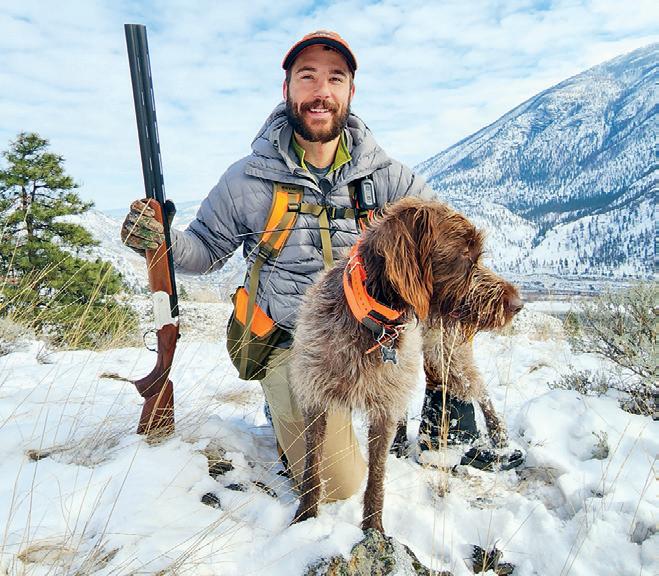
by Jonathan Van EIslander – MSc Student, University of British Columbia, Okanagan Campus Website: jonathanvanelslander.com ● Instagram: @jonnyvan1
My research involves mapping Brown Bear diet across BC using stable isotope analysis, in conjunction with the Ministry of Forests. First, I have estimated the importance of salmon, terrestrial meat, plants, and kokanee to the diet for over 1500 bears around BC. Then using these estimates and novel spatial predictive methods, I am creating fine-scale maps of bear diet and the importance of these four foods to Brown Bear ecology for the entire province. My research is integral to the management and conservation of bears in BC by providing key baselines for bottom-up resource effects on bear populations. This work is based in my interest in bottom-up ecological processes. I am fascinated by how the vastly different ecosystems of British Columbia drive the ecology of the wildlife that occur across them. Brown bears occur in some of the warmest, coldest, wettest and driest places in BC and exhibit enormous niche flexibility. By understanding the variability in their diet, we are able to better understand how bears make a living across the province. I hope to expand this sort of work, investigating how spatial gradients affect wildlife ecology, to a range of species in the future. Originally from Winnipeg, Jonathan has been lost in the woods of BC for the last 10 years. When he’s not identifying wildlife and plants, he is generally snowboarding, reading/writing, or taking photos (mostly of plants). Jonathan’s philosophical and ecological interests both centre squarely on how the unique structure of the places (i.e. habitat) people and wildlife inhabit foment their lives.
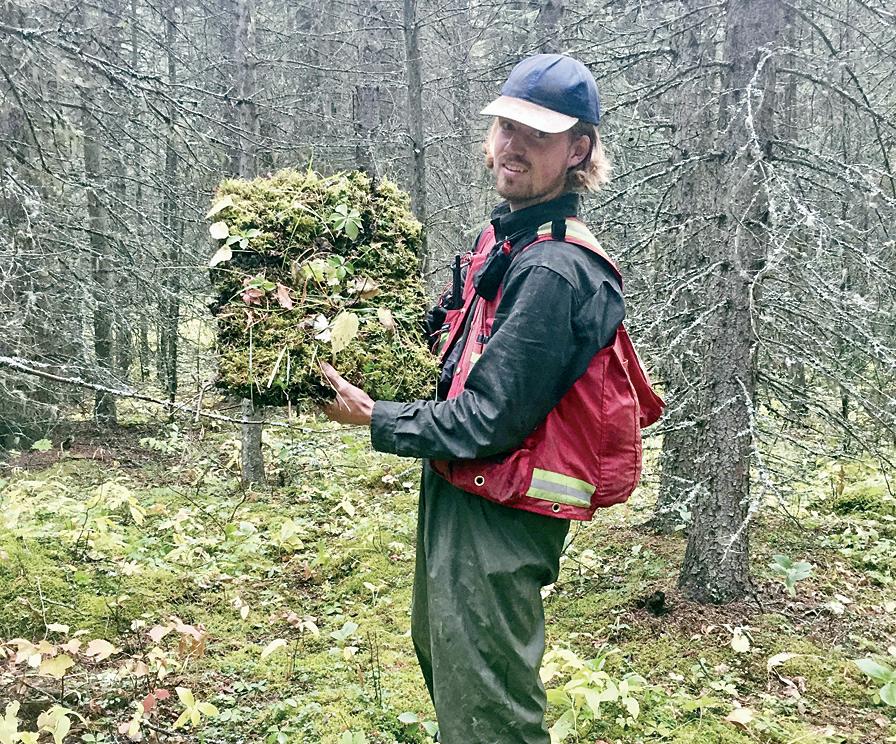
We encourage you to reach out, ask questions, and share your support with the students and projects that you’re interested in. We are so excited for the opportunity to expand this community of wildlife enthusiasts, and we hope you feel comfort in knowing there are so many people committed to protecting the future of wildlife in BC and beyond!











